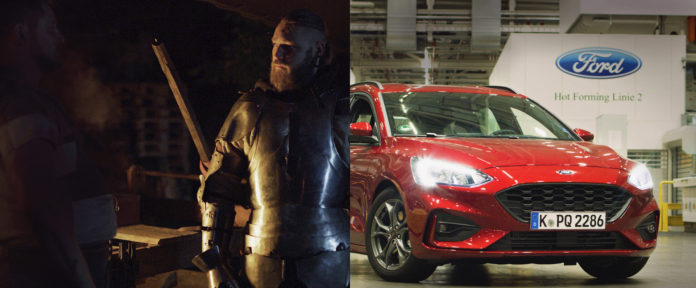
Once it was a technique that helped protect knights in armour from the crashing blows of their rivals. Now, Ford is applying a cutting-edge version of the same technology to help make its cars safer than ever.
The first fully automated hot-forming process shapes and cuts parts of the car – which are integral to protecting drivers and passengers – using giant furnaces, robots and 3,000°C lasers.
“We are building on techniques used to strengthen steel for thousands of years, incorporating modern materials and automation to speed and refine the hot-forming process,” said Dale Wishnousky, vice president, Manufacturing, Ford of Europe.
“The resulting boron steel safety cell helps to make the all-new Focus one of our safest vehicles ever.”
The hot-forming line – fully integrated within the company’s Saarlouis Vehicle Assembly Plant in Germany – was built as part of a recent €600 million investment in the Saarlouis facility.
Hot forming is an integral part of the production of the all-new Ford Focus that was awarded a maximum five-star Euro NCAP safety rating.
All-new Focus makes extensive use of boron steel – the strongest steel used in the auto industry – within the car’s safety cell.
This helps to create a survival space in the event of an accident. In addition, the use of boron, also found in skyscrapers, helps the new model to achieve a 40% improvement in the car’s capability to withstand head‑on crashes.
Hot-formed steel pieces are subjected to temperatures of up to 930° C; unloaded by robots into a hydraulic press that has a closing force up to 1,150 tonnes; and then shaped and cooled in just three seconds.
The boron steel is so strong by this point that a laser beam hotter than lava is used to precision-cut each piece into its final shape.








